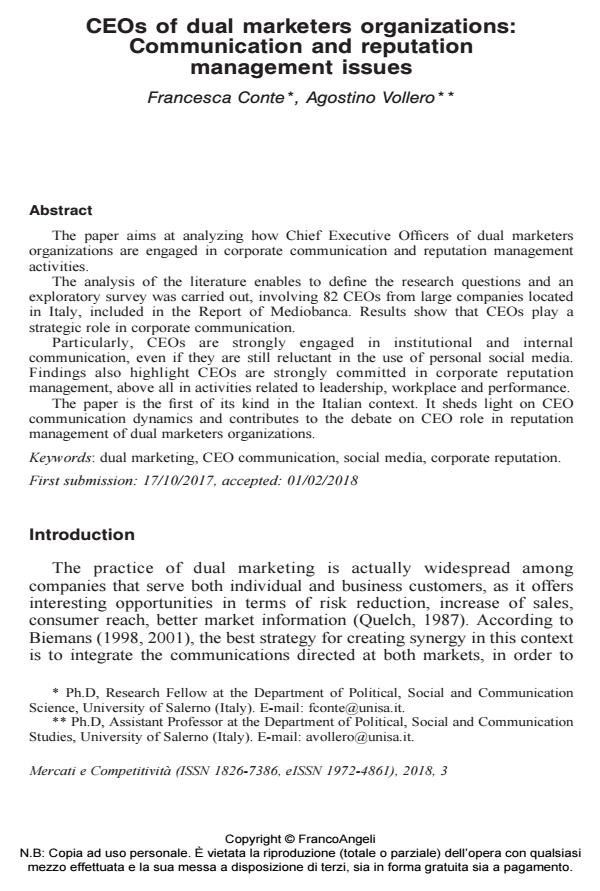CEOs of dual marketers organizations: Communication and reputation management issues
Journal title MERCATI & COMPETITIVITÀ
Author/s Francesca Conte, Agostino Vollero
Publishing Year 2018 Issue 2018/3
Language English Pages 19 P. 21-39 File size 129 KB
DOI 10.3280/MC2018-003003
DOI is like a bar code for intellectual property: to have more infomation
click here
Below, you can see the article first page
If you want to buy this article in PDF format, you can do it, following the instructions to buy download credits

FrancoAngeli is member of Publishers International Linking Association, Inc (PILA), a not-for-profit association which run the CrossRef service enabling links to and from online scholarly content.
The paper aims at analyzing how Chief Executive Officers of dual marketers organizations are engaged in corporate communication and reputation management activities. The analysis of the literature enables to define the research questions and an exploratory survey was carried out, involving 82 CEOs from large companies located in Italy, included in the Report of Mediobanca. Results show that CEOs play a strategic role in corporate communication. Particularly, CEOs are strongly engaged in institutional and internal communication, even if they are still reluctant in the use of personal social media. Findings also highlight CEOs are strongly committed in corporate reputation management, above all in activities related to leadership, workplace and performance. The paper is the first of its kind in the Italian context. It sheds light on CEO communication dynamics and contributes to the debate on CEO role in reputation management of dual marketers organizations.
Keywords: Dual marketing, CEO communication, social media, corporate reputation
Francesca Conte, Agostino Vollero, CEOs of dual marketers organizations: Communication and reputation management issues in "MERCATI & COMPETITIVITÀ" 3/2018, pp 21-39, DOI: 10.3280/MC2018-003003